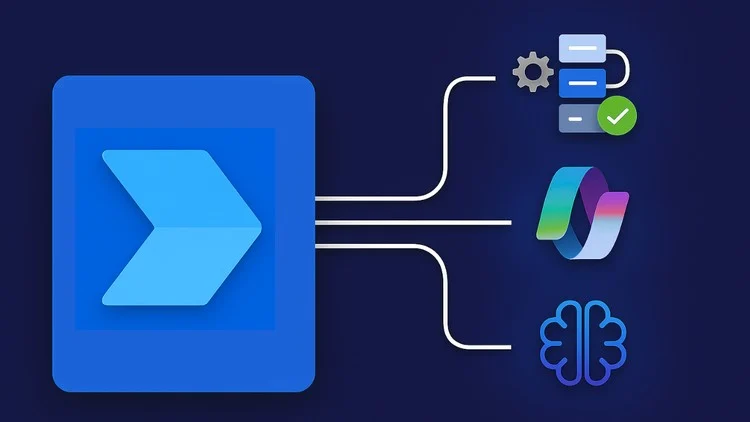AI-powered prompts enable developers and non-developers alike to quickly turn ideas into functional applications without writing code. By simply describing what they want, users can generate apps, websites, and tools that meet their needs efficiently. This approach lowers the barrier to software creation and accelerates the development process.
The key advantage of using AI prompts is the ability to transform natural language descriptions directly into working software, making app building faster and more accessible. Various platforms now offer this capability, allowing users to focus on their ideas instead of technical details.
This technology not only speeds up deployment but also helps refine ideas through iterative feedback and feature recommendations. As a result, building apps becomes a more creative and productive experience, suitable for individuals and businesses seeking quick solutions.
The Power of AI-Powered Prompts for App Creation

AI-powered prompts enable makers to transform their initial concepts into detailed app designs efficiently. These prompts translate simple descriptions into structured plans, bridging the gap between idea and implementation. This process lowers the entry barrier for app creation while accelerating development speed.
How AI Understands and Interprets App Ideas
AI systems analyze natural language inputs by identifying key intents and components within user descriptions. When a user describes their idea, the AI parses it into discrete functions, user flows, and data structures.
Through pattern recognition and context understanding, the AI generates an AI-generated blueprint outlining essential app features. This blueprint captures the user’s goals and expected behavior, allowing the model to move beyond generic responses toward tailored solutions.
The AI also adapts to iterative refinements, improving its interpretation with additional details. This dynamic understanding reduces miscommunication and ensures that the core vision remains intact throughout development.
Turning Plain English Into Functional Blueprints
The core strength of AI-powered prompts lies in translating everyday language into actionable technical plans. Users no longer need to fully specify code or architecture details themselves.
The AI breaks down the user’s description and formulates a clear, organized blueprint consisting of interface elements, workflows, and data handling procedures. This blueprint acts as a functional outline guiding app creation.
This method democratizes app development by allowing non-technical makers to express ideas intuitively. It accelerates iteration since the AI fills in technical gaps, changing plain English inputs into concrete, usable frameworks.
Reducing Technical Barriers in App Development
AI-driven prompt systems lower technical hurdles by automating complex tasks traditionally handled by developers. Users avoid manual coding by relying on AI that interprets and implements their requirements.
This automation supports custom generative AI capabilities integrated into app environments, empowering creators at all skill levels. The AI manages syntax, libraries, and integration, allowing makers to focus on business logic and usability.
As a result, the development cycle shrinks, and fewer specialist skills are needed. This enables faster prototyping, flexibility in design changes, and wider participation in app building across diverse backgrounds.
Step-By-Step Process: Transforming Ideas into Apps
Turning a concept into a functional app involves precise steps that organize the vision, leverage AI-generated plans, simplify development, and maintain quality through expert oversight. These elements ensure a clear path from idea to product without unnecessary complexity.
Describing Your Vision
The initial step focuses on clearly defining the app idea. It requires detailing the app’s purpose, target users, and key features.
This description acts as the foundation for subsequent AI processing. Precision is vital to avoid ambiguity.
Users articulate their vision using prompts that specify functionality, design preferences, and user interactions.
The clearer the idea, the more effective the AI’s output will be. This stage may involve iterations to refine the description for completeness and accuracy.
AI Blueprint Generation and Validation
Once the vision is described, AI generates a comprehensive blueprint outlining the app’s structure, features, and data flows.
This AI-generated blueprint serves as a technical map, including UI layout, backend requirements, and integration points.
Validation involves reviewing the blueprint for feasibility and alignment with the original vision.
Some platforms allow users to modify blueprints directly or regenerate parts of it to better suit needs.
This approach reduces manual planning time and ensures that the app’s architecture is sound before development begins.
One-Click Build Experience
This stage leverages automation to convert the validated blueprint into a working application quickly.
Users can deploy the app through a single command or click, which triggers automated coding, configuration, and setup.
Behind the scenes, AI tools generate code snippets, configure databases, and integrate APIs as needed.
This method dramatically shortens development time, enabling rapid prototyping or even production-ready apps in hours.
It requires minimal technical knowledge, making app creation accessible to users without coding skills.
Expert Support and Quality Assurance
Despite AI automation, expert review remains crucial to ensure app quality and reliability.
Specialists audit the code, test functionality, and check for security vulnerabilities.
They also provide feedback to improve user experience and performance.
This human oversight complements AI efficiency by addressing nuanced issues machines may overlook.
Ongoing support helps maintain the app post-launch, handling updates and troubleshooting to sustain smooth operation.
Key Features and Benefits of No-Code AI App Platforms
No-code AI app platforms focus on simplifying the development process while ensuring professional quality and deep insights into app performance. These platforms enable users without coding experience to build sophisticated applications supported by secure structures and data-driven management tools.
Zero-Code Development
No-code AI platforms eliminate the need for programming knowledge through intuitive drag-and-drop interfaces. Users can assemble app components visually, selecting pre-built AI features like natural language processing or image recognition without writing a single line of code.
This method reduces development time drastically, enabling teams to prototype and refine ideas quickly. It also cuts costs significantly, making AI solutions accessible to a broader range of businesses, including those in emerging markets.
By removing technical barriers, no-code tools empower non-technical professionals to automate workflows and create tailored applications efficiently.
Professional-Grade Quality and Security
Despite requiring no coding, these platforms maintain high standards for quality and security. They offer tested frameworks that ensure apps are reliable and scalable, meeting enterprise-grade performance standards.
Security protocols are embedded by default, including data encryption and compliance with regulations. This minimizes vulnerabilities commonly introduced through custom development and coding errors.
As a result, companies can confidently deploy applications for sensitive tasks like document processing, customer data management, or quality assurance without sacrificing robustness.
Integrated Analytics and Dashboards
Many no-code AI platforms provide built-in analytics and dashboards to monitor application usage and performance in real time. These tools collect data on user behavior, system efficiency, and operational bottlenecks.
Users gain direct access to actionable insights without needing separate analytics software. The visual dashboards highlight trends and anomalies clearly, supporting informed decision-making and continuous improvement.
This integration supports iterative development cycles where feedback is quickly incorporated, enhancing app relevance and effectiveness over time.
Scalable Deployment and Infrastructure Options
Building AI-powered apps requires a reliable infrastructure that can grow with usage and handle fluctuating demand without compromising performance. The choice of deployment platform and the mechanisms for managing traffic are critical to maintaining a scalable solution.
Deploying to AWS, GCP, or Vercel
AWS, Google Cloud Platform, and Vercel offer robust environments for deploying AI applications with scalable infrastructure. AWS provides extensive services, such as Amazon Bedrock AgentCore, which supports dynamic and secure AI agent deployment at scale. Its wide array of compute, storage, and AI-specific services allow fine-tuned resource allocation.
GCP excels with integrated AI tools and efficient auto-scaling options, making it suitable for apps that require flexible compute resources and advanced machine learning pipelines. Vercel focuses on front-end deployment but supports serverless functions that scale automatically, ideal for AI apps reliant on APIs and real-time user interaction.
Each platform supports containerization with Docker and orchestration via Kubernetes or serverless models, enabling seamless scaling. Costs, ecosystem compatibility, and geographic availability should guide the selection depending on the app’s needs.
Automatic Handling of Traffic and Scaling
Scalability depends on infrastructure that adjusts resources based on real-time traffic. Cloud providers offer auto-scaling groups or serverless architectures that increase or decrease instances automatically.
Key strategies include:
- Load Balancing: Distributing requests evenly to prevent bottlenecks.
- Prompt Caching: Storing frequent prompt responses to reduce redundant processing.
- Horizontal Scaling: Adding more instances rather than scaling vertically.
Advanced AI app deployments also require secure orchestration platforms to handle scaling without increasing latency or risking data security. Automated monitoring and alerting tools detect demand spikes early, triggering scale-out events that preserve responsiveness without manual intervention.
Security, Compliance, and Expert Support
Ensuring security and compliance is a foundational aspect when transforming ideas into applications with AI-powered prompts. Organizations benefit from integrated safeguards, adherence to key regulatory standards, and access to seasoned engineering professionals who can assist throughout the development process.
Built-In Security Checks
AI-driven platforms embed security checks directly into the development workflow to detect vulnerabilities early. These checks analyze code, configurations, and AI prompt outputs for potential risks such as injection attacks, unauthorized data access, or biased algorithmic behaviors.
Real-time feedback guides developers to remediate issues before deployment, reducing costly security incidents later. Automated threat modeling and continuous vulnerability scanning are commonly applied to ensure the application remains resilient under evolving threat landscapes.
Integrating security into everyday coding practices helps maintain professional-grade quality without sacrificing development speed. This proactive approach supports compliance and reduces the burden on security teams by addressing risks as they arise.
GDPR and SOC2 Compliance
Meeting regulatory requirements like GDPR and SOC2 is critical for applications handling user data. AI-powered development tools incorporate compliance frameworks to help enforce data privacy, transparency, and auditability.
Features include automated data classification, consent management, and encrypted storage checks. These tools maintain detailed logs and generate reports that simplify external audits.
By aligning AI applications with GDPR’s strict data protection principles and SOC2’s security controls, organizations demonstrate accountability and reduce legal risk. Compliance integration is designed to be seamless, supporting enterprise standards without impeding innovation.
Accessible Expert Engineering Support
Access to expert engineering support complements AI tools by providing specialized knowledge in security and compliance challenges. Skilled engineers assist in customizing AI prompt implementations, ensuring they meet professional-grade quality benchmarks.
Support teams address complex technical questions, guide secure architecture design, and help remediate vulnerabilities detected during development. This human input is vital when navigating nuanced risks or interpreting regulatory guidelines.
By providing reliable expert resources, organizations can confidently accelerate AI application delivery while maintaining control over security and compliance complexities. Expert assistance bridges the gap between automated AI capabilities and real-world requirements.
Getting Started with imagine.bo
Imagine.bo offers an intuitive way to transform ideas into functional apps using AI-powered prompts. Users must first gain access, then learn to navigate its creation process while understanding the pricing model and future offerings. This guides users from initial interest to active development within the platform.
Joining the Private Beta and Waitlist
Access to imagine.bo begins through a private beta program. Interested users need to sign up on the official waitlist via the imagine.bo website. Early registration prioritizes access and allows users to experience the full platform ahead of a public launch.
The waitlist process requires submitting basic information and a brief description of the app concept. This helps the imagine.bo team assess readiness and align beta participation with users’ project goals. Notifications are sent as spots open up, typically in phases.
Early beta users benefit from direct support and have opportunities to provide feedback. This engagement helps shape the tool’s functionality before wider release, making the waitlist a key step for builders aiming to work with imagine.bo.
Navigating the App Creation Workflow
Imagine.bo simplifies app creation by converting natural language prompts into production-ready projects. Users start by inputting clear, concise descriptions of the app’s purpose and features. The AI then generates a working prototype based on these inputs.
The platform divides the process into clear stages: describing functionality, refining app components, and launching. Each step includes options to customize UI elements and integrations without coding. This workflow makes scalable app development accessible to non-technical users.
Users can iterate rapidly with instant previews and easy adjustments. Built-in automation handles back-end infrastructure, reducing setup time significantly. This lets creators focus on app logic and user experience rather than technical implementation details.
Understanding Pricing and Future Plans
Currently, imagine.bo offers clear pricing tiers designed for various user needs, from individual creators to businesses. Basic plans allow limited app creation and usage, while premium tiers include enhanced features like higher scalability and priority support.
Pricing is transparent and based on factors such as the number of apps deployed and additional AI-driven capabilities. Potential users receive detailed pricing breakdowns on the imagine.bo site before committing, ensuring budget alignment.
Future plans involve expanding functionality with advanced AI assistance, integrations, and collaborative features. Imagine.bo intends to evolve pricing accordingly, providing upgrades that reflect these improvements. This roadmap ensures ongoing value for adopters.
Ideal Users and Use Cases for AI-Driven App Development
AI-driven app development serves distinct user groups who benefit from rapid prototyping, automation, and enhanced efficiency. Its value lies in streamlining workflows, enabling fast feedback loops, and supporting various project scopes, from solo initiatives to managed teams.
Founders and Solo Makers
Founders and solo makers leverage AI-powered prompts to build apps without extensive technical resources. This approach allows them to quickly translate ideas into functional prototypes, reducing dependency on developers.
By automating coding tasks and generating UI components, AI tools help these users focus on product vision and user needs. They can experiment with features and iterate based on early feedback, maximizing limited time and budget.
Solo makers often use AI to create MVPs that demonstrate core functionalities. This accelerates attracting investors or early customers while managing scope efficiently.
Agencies and Project Managers
Agencies and project managers use AI-driven development to scale team productivity and improve delivery timelines. AI tools help coordinate complex projects by automating repetitive tasks and generating baseline code.
They rely on AI prompts to maintain consistency across different app modules and ensure alignment with client requirements. It also aids in rapid prototyping, so stakeholders see tangible progress faster.
This approach reduces communication overhead and accelerates approval cycles, allowing agencies to handle multiple clients or projects simultaneously with greater precision and control.
Building MVPs and Iterating Quickly
AI-powered prompts are ideal for creating MVPs that focus on essential features without extensive upfront coding. This enables teams to validate market demand and user interest early in the development cycle.
Rapid iteration becomes simpler as AI tools generate new feature versions or user flows based on updated input. This supports agile development methods and frequent releases.
Using AI for MVP development shortens time-to-market while minimizing initial investment. It encourages experimentation and data-driven decisions to refine the product iteratively until it meets core user needs.
Future Opportunities in AI-Enhanced App Creation
AI-driven tools are advancing how apps move beyond basic models, streamline teamwork, and offer deeper personalization. These shifts create clear pathways for developers to build smarter, more adaptive applications that better meet user needs.
Expanding Beyond MVPs
AI tools now facilitate the shift from minimum viable products (MVPs) to fully scalable, feature-rich applications. Automated code generation and testing reduce time-to-market, allowing developers to focus on refining user experience rather than basic functionality.
By incorporating predictive analytics and user behavior insights early, apps can adapt dynamically post-launch. This adaptability supports ongoing improvements without requiring complete rebuilds.
Additionally, AI enables modular design, letting teams quickly add or modify components. This flexibility helps apps grow efficiently in response to market demands and user feedback.
Enhancing Collaboration Between Humans and AI
AI acts as a co-creator, assisting developers with suggestions, debugging, and design optimization. This collaborative approach reduces errors and accelerates development cycles.
Natural language processing allows non-technical stakeholders to communicate requirements directly through prompts, bridging the gap between ideas and implementation.
Continuous AI feedback enables iterative improvements during coding or prototyping phases. Developers can test multiple variations rapidly, improving creativity without sacrificing speed.
Documentation and version control also improve, as AI tracks changes and suggests improvements to keep teams aligned and workflows transparent.
Integrating Advanced Features and Customizations
The future of AI-powered app creation includes embedding complex functionalities like emotion recognition, personalized learning systems, and intelligent shopping assistants.
AI-driven customization uses data to tailor app interfaces and content, improving engagement through relevance. This personalization extends across devices and platforms seamlessly.
Security and privacy controls benefit from AI automation, providing robust, adaptive protections without manual intervention.
Developers are empowered to offer clients or end-users customizable AI components, making apps more versatile in responding to changing user demands or industry standards.




